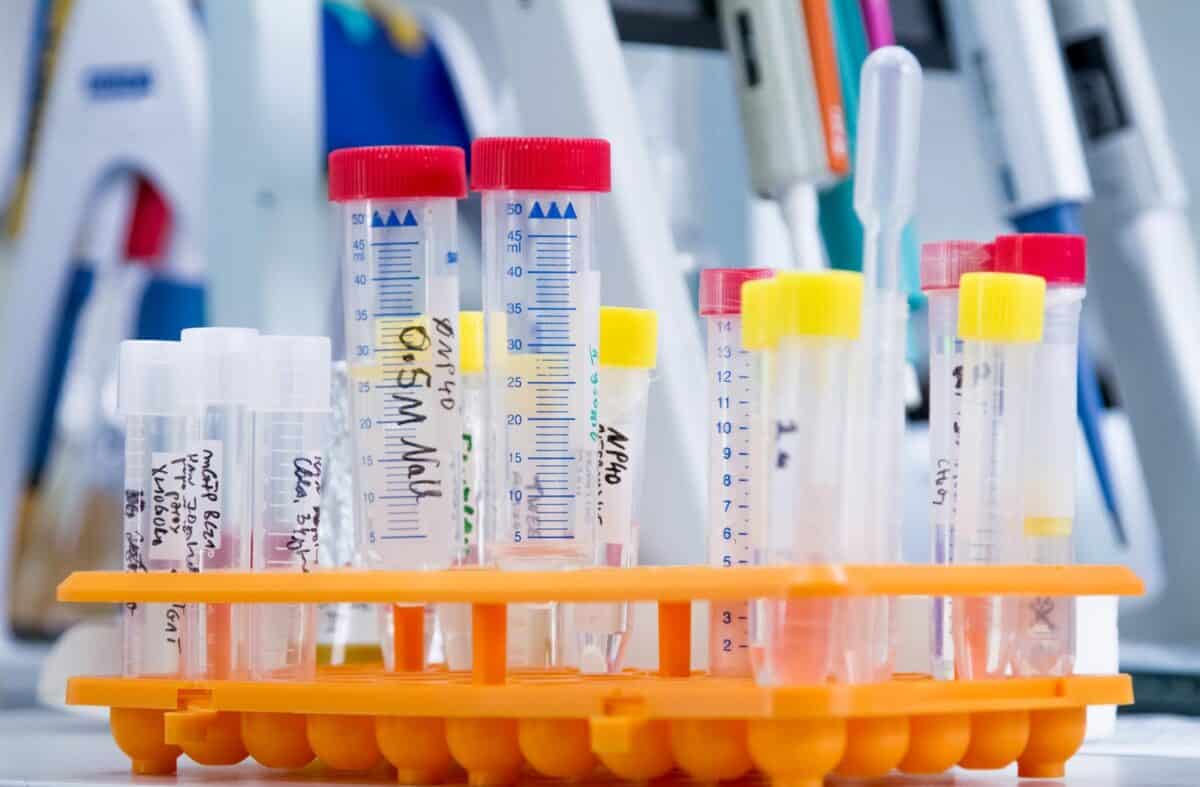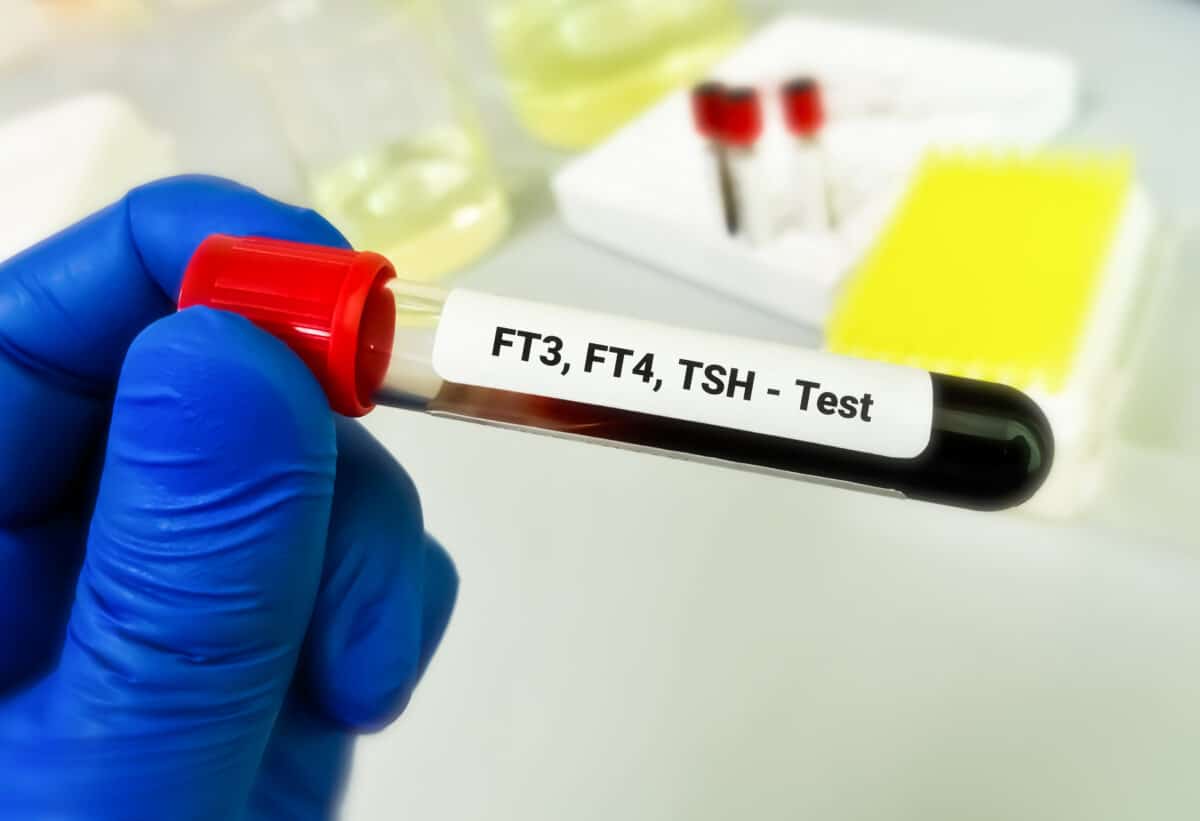Normal Lab Values Every Nurse Should Know
Normal Lab Values Every Nurse Should Know
As a nurse, it is crucial to have a solid understanding of normal laboratory values. Without this knowledge, accurately interpreting and assessing patient lab results becomes nearly impossible. Are you familiar with the normal ranges for various lab values? If not, you may risk missing important indicators of a patient’s health status or even misdiagnosing a condition.
In the healthcare field, lab tests play a vital role in providing valuable information about a patient’s health. From blood tests to urine analyses, these tests help healthcare professionals assess organ function, detect infections, monitor medication effectiveness, and more. Familiarizing yourself with normal lab values is an essential responsibility for every nurse.
Being well-versed in normal lab values greatly contributes to your ability to provide high-quality care. By knowing what is considered normal, you can easily identify deviations from the norm and take appropriate actions. In this article, we will explore the most important lab values that every nurse should know, ensuring that you are equipped with the knowledge to excel in your role.
Complete Blood Count (CBC)
A complete blood count (CBC) is a common laboratory test that provides valuable information about a patient’s overall health. It measures the different components of blood, including red blood cells (RBC), white blood cells (WBC), and platelets. The purpose of a CBC is to assess a patient’s blood cell counts and identify any abnormalities that may indicate an underlying medical condition.
Normal Ranges For Red Blood Cells (RBC), White Blood Cells (WBC), And Platelets
Understanding the normal ranges for RBC, WBC, and platelets is essential for nurses to accurately interpret CBC results. Generally, the normal reference ranges are as follows:
- RBC: The normal lab value for RBC is typically between 4.5 and 5.5 million cells per microliter (mcL) for men, and between 4.0 and 5.0 million cells/mcL for women.
- WBC: The normal range for WBC is typically between 4,500 and 11,000 cells/mcL. However, this range may vary depending on the individual’s age, sex, and overall health.
- Platelets: The normal range for platelets is typically between 150,000 and 450,000 cells/mcL.
Interpretation Of CBC Results And Implications For Patient Care
Interpreting CBC results is an important skill for nurses, as it helps guide patient care and assist in diagnosing and monitoring various medical conditions. Below are some common CBC results and their implications for patient care:
- Low RBC count (anemia): A low RBC count indicates a decreased ability of the blood to deliver oxygen to the body’s tissues. Nurses should monitor the patient for symptoms of anemia, such as fatigue and shortness of breath, and work with the healthcare team to address the underlying cause.
- Increased WBC count (infection or inflammation): An elevated WBC count is often indicative of an ongoing infection or inflammation in the body. Nurses should closely monitor the patient’s vital signs, assess for signs of infection, and implement appropriate infection control measures.
- Low platelet count (thrombocytopenia): A low platelet count may increase the risk of bleeding and can be caused by various factors, including medication side effects or certain medical conditions. Nurses should assess the patient for signs of bleeding, such as easy bruising or prolonged bleeding, and collaborate with the healthcare team to manage and monitor the condition.

Basic Metabolic Panel (BMP)
The Basic Metabolic Panel (BMP) is a commonly ordered blood test that provides important information about a patient’s overall health and metabolic function. It consists of various blood tests that measure different components, including electrolytes, blood glucose, and blood urea nitrogen (BUN).
Normal Ranges For Electrolytes (Sodium, Potassium, Chloride, Bicarbonate), Blood Glucose, And Blood Urea Nitrogen (BUN)
- Sodium: The normal range for sodium is generally between 135-145 mmol/L. Sodium levels help assess hydration status, as well as the functioning of the nervous system and kidneys.
- Potassium: Normal potassium levels usually fall within the range of 3.5-5.0 mmol/L. Potassium plays a crucial role in maintaining proper heart and muscle function.
- Chloride: The normal range for chloride is typically between 98-106 mmol/L. Chloride levels are important in assessing electrolyte balance and acid-base status.
- Bicarbonate: Normal bicarbonate levels usually range from 22-28 mmol/L. Bicarbonate helps regulate the body’s acid-base balance.
- Blood Glucose: Blood glucose levels indicate the amount of sugar (glucose) in the blood. Normal fasting blood glucose levels typically range from 70-100 mg/dL. Elevated or decreased blood glucose levels can indicate conditions such as diabetes or hypoglycemia that need to be addressed.
- Blood Urea Nitrogen (BUN): BUN is a measure of the amount of urea nitrogen in the blood, which is a waste product formed during the breakdown of protein. Normal BUN levels usually fall within the range of 7-20 mg/dL. Elevated BUN levels can indicate kidney dysfunction or dehydration.
Understanding BMP Results And Their Impact On Patient Management
Interpreting bmp results is crucial for nurses as it helps in assessing patients’ overall health and guiding patient management. Abnormal electrolyte levels could indicate dehydration, electrolyte imbalances, or organ dysfunction. High blood glucose levels may suggest diabetes or poor glycemic control.
Elevated BUN levels may indicate kidney problems or dehydration. By understanding BMP results, nurses can collaborate with other healthcare professionals to develop appropriate care plans and interventions for their patients.
Comprehensive Metabolic Panel (CMP)
The Comprehensive Metabolic Panel (CMP) is a blood test that measures various substances in the blood to assess the function of organs such as the liver and kidneys. It provides valuable information about a patient’s overall health and helps in diagnosing and monitoring various conditions.
Normal Ranges For Liver Function Tests (AST, ALT, ALP, Bilirubin), Kidney Function Tests (creatinine, eGFR), And Total Protein Levels
The comprehensive metabolic panel (CMP) includes tests that assess kidney function. The blood urea nitrogen (BUN) and creatinine levels provide valuable information about the kidneys’ ability to filter waste products from the body.
Normal BUN levels range from 6 to 20 mg/dL, while normal creatinine levels vary based on factors such as age and gender. Creatinine clearance or the estimated glomerular filtration rate (GFR) can also indicate kidney function, with a GFR above 90 mL/min/1.73m² considered normal.
The CMP also includes tests that evaluate liver health. Bilirubin levels assess the liver’s ability to process waste products. Normal total bilirubin levels are typically below 1.2 mg/dL. Liver enzymes, such as alanine aminotransferase (ALT) and aspartate aminotransferase (AST), can indicate liver damage or disease. The normal ranges for these tests are as follows:
- Aspartate Aminotransferase (AST): 10-40 IU/L
- Alanine Aminotransferase (ALT): 7-56 IU/L
- Alkaline Phosphatase (ALP): 45-115 IU/L
- Alkaline Phosphatase (ALP): 45-115 IU/L
- Total Bilirubin: 0.1-1.2 mg/dL
Normal Ranges For Kidney Function Tests
The CMP also includes kidney function tests to assess the efficiency of the kidneys in filtering waste products from the blood. The normal ranges for these tests are as follows:
- Creatinine: 0.6-1.3 mg/dL (normal may vary based on age, gender, and muscle mass)
- Estimated Glomerular Filtration Rate (eGFR): Above 60 mL/min/1.73m² (higher values indicate better kidney function)
Normal Range For Total Protein Levels
Total protein levels in the blood provide information about the overall protein status in the body. The normal range for total protein is typically 6.4-8.3 g/dL, with albumin and globulin being the two main components.
Assessing Glucose Levels (Fasting Blood Sugar, HbA1c)
Glucose levels are essential markers for monitoring diabetes and overall glycemic control. Fasting blood sugar measures glucose levels after a period of not eating or drinking anything other than water for eight hours.
Normal fasting blood sugar levels range from 70 to 100 mg/dL. HbA1c (glycated hemoglobin) provides a long-term measure of a patient’s average blood sugar levels over the previous two to three months. An HbA1c level below 5.7% is considered normal.
Analyzing CMP Results and Their Relevance In Clinical Decision-Making
Interpreting CMP results involves comparing the measured values to the normal ranges. Abnormal results may indicate liver or kidney disease, dehydration, malnutrition, or other health conditions. Nurses need to be familiar with these normal values to assess and implement appropriate patient care interventions.
Understanding CMP results can help nurses make clinical decisions such as initiating further tests, referring patients to specialists, or adjusting medication dosages. Regular monitoring of CMP results also helps in tracking a patient’s progress and evaluating the effectiveness of treatment plans.

Coagulation Profile
The coagulation profile is a set of laboratory tests that measure various factors involved in the blood’s ability to clot. These tests help identify any abnormalities in the coagulation process, which can be crucial in diagnosing and treating conditions such as bleeding disorders or clotting disorders.
Normal Ranges For Prothrombin Time (PT), International Normalized Ratio (INR), And Activated Partial Thromboplastin Time (aPTT)
- Prothrombin Time (PT): The normal range for PT is typically between 11 to 13.5 seconds. PT measures the time it takes for the blood to clot. Each laboratory establishes a normal or control value based on the method used to perform the PT test.
- International Normalized Ratio (INR): INR is a standardized way of reporting PT results. For most individuals, the INR range is around 0.9 to 1.1. However, this range may vary depending on specific medical conditions or medications.
- Activated Partial Thromboplastin Time (aPTT): The normal range for aPTT is generally between 25 to 35 seconds. aPTT measures the time it takes for the blood to clot after specific clotting agents are added to the sample.

Interpreting Coagulation Profile Results And Implications For Patient Care
- Prolonged PT: A prolonged PT may indicate a deficiency in clotting factors, such as vitamin K deficiency or liver disease. It can also be a sign of anticoagulant therapy. Nurses should monitor patients closely for signs of bleeding and ensure appropriate interventions are implemented.
- Elevated INR: An elevated INR suggests that the patient’s blood takes longer to clot. This can be due to various factors, including anticoagulant therapy or liver dysfunction. Nurses should closely monitor patients, adjust medication dosages as needed, and watch for signs of bleeding or clotting complications.
- Prolonged aPTT: A prolonged aPTT can indicate deficiencies in clotting factors involved in the intrinsic pathway of coagulation. This may be seen in conditions such as hemophilia or liver disease. Nurses should monitor for signs of bleeding and ensure appropriate clotting factor replacement or other interventions are implemented.
Arterial Blood Gas (ABG) Analysis
Arterial Blood Gas (ABG) analysis is a diagnostic test that measures the levels of various gases in the arterial blood, including pH, PaO2, PaCO2, HCO3-, and SaO2. It is performed to assess the respiratory and metabolic function of a patient and provide valuable information to guide treatment decisions.
Normal Ranges For pH, Partial Pressure Of Oxygen (PaO2), Partial Pressure Of Carbon Dioxide (PaCO2), Oxygen Saturation (SaO2), And Bicarbonate (HCO3-)
- pH: Normal range is 7.35-7.45. Values below 7.35 indicate acidosis, while values above 7.45 indicate alkalosis.
- PaO2: Normal range is 75-100 mmHg. Values below 75 mmHg suggest hypoxemia.
- PaCO2: Normal range is 35-45 mmHg. Values below 35 mmHg indicate hyperventilation and respiratory alkalosis, while values above 45 mmHg indicate hypoventilation and respiratory acidosis.
- HCO3-: Normal range is 22-28 mEq/L. Values below 22 mEq/L indicate metabolic acidosis, while values above 28 mEq/L indicate metabolic alkalosis.
- SaO2: Normal range is 95-100%. Values below 95% suggest hypoxemia.
Analyzing ABG Results And Their Significance In Respiratory And Metabolic Disorders
- Respiratory acidosis: It occurs when there is an accumulation of CO2 in the bloodstream, leading to decreased pH. ABG results show increased PaCO2 (>45 mmHg) and decreased pH (<7.35). Causes include hypoventilation, lung diseases, and airway obstruction.
- Respiratory alkalosis: It occurs when there is a loss of CO2 from the bloodstream, leading to increased pH. ABG results show decreased PaCO2 (<35 mmHg) and increased pH (>7.45). Causes include hyperventilation, anxiety, and high-altitude exposure.
- Metabolic acidosis: It occurs when there is an excess of acid or a loss of bicarbonate in the body, leading to decreased pH. ABG results show decreased HCO3- (<22 mEq/L) and decreased pH (<7.35). Causes include renal failure, diabetic ketoacidosis, and severe diarrhea.
- Metabolic alkalosis: It occurs when there is a loss of acid or an excess of bicarbonate in the body, leading to increased pH. ABG results show increased HCO3- (>28 mEq/L) and increased pH (>7.45). Causes include vomiting, excessive use of antacids, and diuretic therapy.

Thyroid Function Tests
Thyroid Function Tests (TFTs) are a set of blood tests that help assess the function of the thyroid gland. These tests measure various hormones produced by the thyroid and provide valuable information about overall thyroid health.
Normal Ranges For Thyroid-Stimulating Hormone (TSH), Free Thyroxine (FT4), And Triiodothyronine (T3)
- TSH: Normal range is typically between 0.4 and 4.0 milli-international units per liter (mIU/L). TSH is produced by the pituitary gland and stimulates the thyroid to release thyroid hormones.
- FT4: Normal range is usually between 0.8 and 1.8 nanograms per deciliter (ng/dL). FT4 represents the unbound or free form of the hormone thyroxine, which is produced by the thyroid gland.
- T3: Normal range is generally between 80 and 200 nanograms per deciliter (ng/dL). T3 is the active form of thyroid hormone and plays a crucial role in regulating metabolism.
Understanding TFT Results And Their Impact On Diagnosing Thyroid Disorders
- Normal TFT results: If TSH, FT4, and T3 levels fall within the normal ranges, it generally indicates that the thyroid gland is functioning properly.
- Hypothyroidism: Low levels of TSH, FT4, and T3 may suggest an underactive thyroid, a condition known as hypothyroidism. This can cause symptoms like fatigue, weight gain, and depression.
- Hyperthyroidism: Elevated levels of TSH and T3, along with low FT4 levels, may indicate an overactive thyroid, or hyperthyroidism. Symptoms can include weight loss, increased heart rate, and anxiety.
- Subclinical thyroid dysfunction: In some cases, TFT results may fall outside the normal ranges, but not to the extent that a definitive diagnosis of hypothyroidism or hyperthyroidism can be made. This is referred to as subclinical thyroid dysfunction and may require further monitoring.
Cardiac Enzymes
Cardiac enzymes are proteins released into the bloodstream when there is damage to the heart muscle. They play a crucial role in diagnosing and assessing cardiac events such as heart attacks. The three most commonly measured cardiac enzymes are troponin, creatine kinase (CK), and myoglobin.
Normal Ranges For Cardiac Enzymes
- Troponin: The normal range for troponin varies depending on the laboratory, but a level below the reference range indicates a low risk of cardiac injury. The specific cutoff values may be different for troponin I and troponin T.
- Creatine Kinase (CK): The normal range for CK also varies by gender and age. In general, the reference range for males is 38-174 units per liter (U/L), while for females, it is 26-140 U/L.
- Myoglobin: The normal range for myoglobin is typically less than 90 micrograms per liter (mcg/L).
Interpreting Cardiac Enzyme Results And Their Significance In Assessing Cardiac Events
- Troponin: Elevated troponin levels indicate damage to the heart muscle, which can be caused by conditions such as myocardial infarction (heart attack) or myocarditis. The rise and fall of troponin levels over time can help determine the severity and timing of the cardiac event.
- Creatine Kinase (CK): CK levels may be elevated in conditions such as myocardial infarction or muscular dystrophy. CK levels peak within 12-24 hours after a heart attack and return to normal within 2-3 days.
- Myoglobin: Elevated myoglobin levels suggest heart muscle damage, but it is not as specific to the heart as troponin. Myoglobin levels rise and fall rapidly, making it a valuable tool for early detection of heart attacks.

Urinalysis
Urinalysis is a common diagnostic test that analyzes the composition and properties of urine. It provides valuable information about a patient’s kidney function, and urinary tract health, and can help diagnose various medical conditions.
Normal Ranges For Various Components (color, pH, Specific Gravity, Protein, Glucose, Ketones, Leukocytes, Nitrites, And Microscopic elements)
- Color: Normal urine color ranges from pale yellow to amber. Different colors may indicate dehydration, certain medications, or underlying medical issues.
- pH: Normal urine pH ranges from 4.6 to 8.0, with a slightly acidic to slightly alkaline environment.
- Specific gravity: Normal urine specific gravity ranges from 1.005 to 1.030, indicating the concentration of solutes in the urine.
- Protein: Normal urine protein levels should be less than 150 mg/dL. Higher protein levels may suggest kidney damage or other kidney-related disorders.
- Glucose: Normally, urine should not contain any glucose. Elevated levels may indicate diabetes or other metabolic disorders.
- Ketones: Ketones should not be present in the urine under normal circumstances. The presence of ketones may indicate uncontrolled diabetes or other metabolic conditions.
- Leukocytes: Normally, there should be no or very few leukocytes in the urine. Increased levels suggest an infection or inflammation in the urinary tract.
- Nitrites: Nitrites should not be present in the urine. Their presence may indicate a urinary tract infection caused by specific bacteria.
- Microscopic elements: Normal urine should contain a few red blood cells and white blood cells. Higher numbers may indicate underlying issues such as infection or kidney disease.
Analyzing Urinalysis Results And Their Implications For Kidney And Urinary Tract Health
The results of a urinalysis can provide valuable insights into a patient’s kidney and urinary tract health. Abnormal findings may indicate various conditions such as urinary tract infections, kidney disease, diabetes, dehydration, or other metabolic disorders.
Interpreting these results requires a comprehensive understanding of normal ranges and their implications. Nurses should consult with healthcare providers to interpret the results accurately and provide appropriate patient care.
Conclusion Normal Lab Values Nursing Students
Normal lab values are essential tools for nurses, enabling them to assess a patient’s health status accurately and make informed decisions about their care. By understanding the significance of various lab tests and their normal ranges, nurses play a pivotal role in diagnosing medical conditions, monitoring treatment efficacy, and ensuring positive patient outcomes.
Emphasizing the importance of continuous learning and staying updated on medical advancements will enable nurses to excel in their roles and provide the highest standard of care for their patients.
